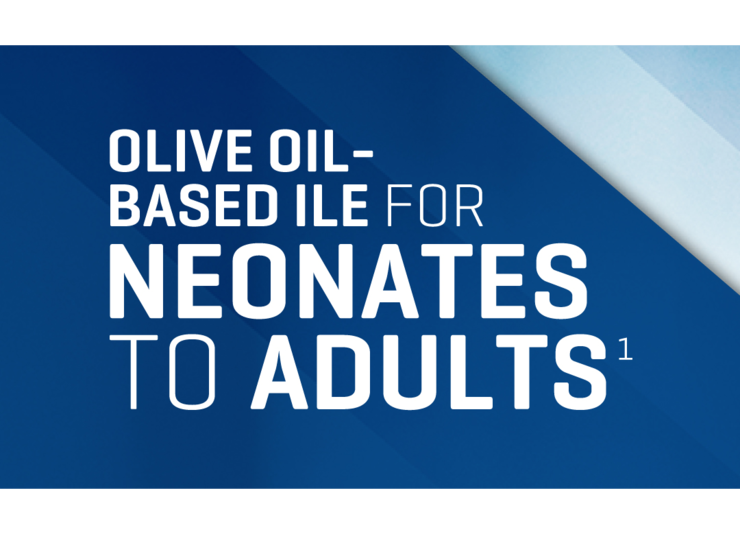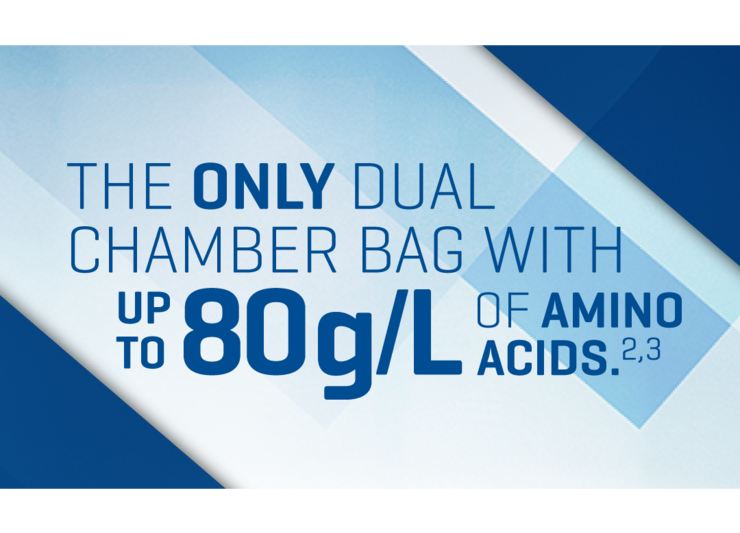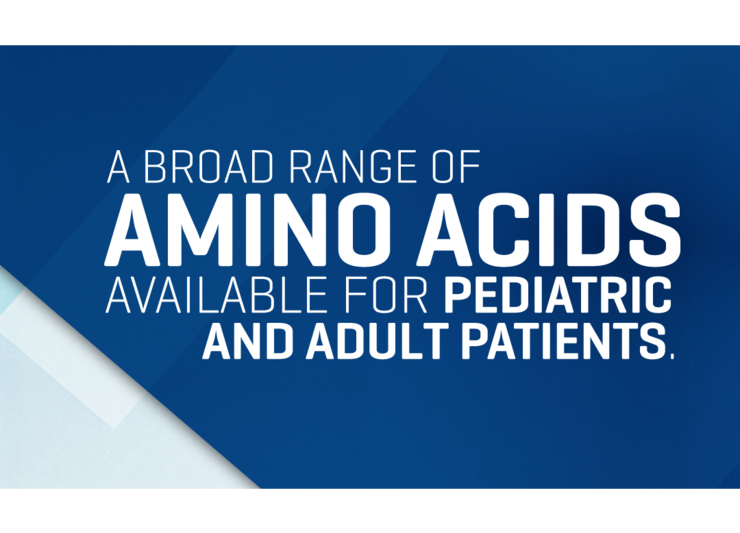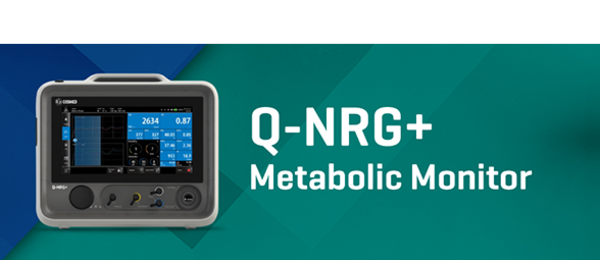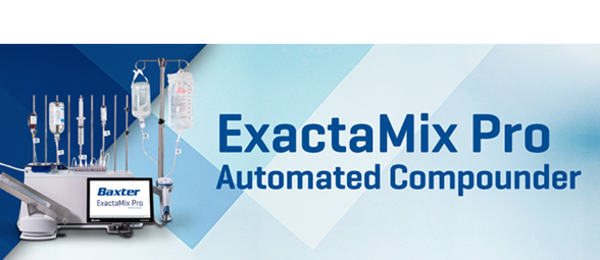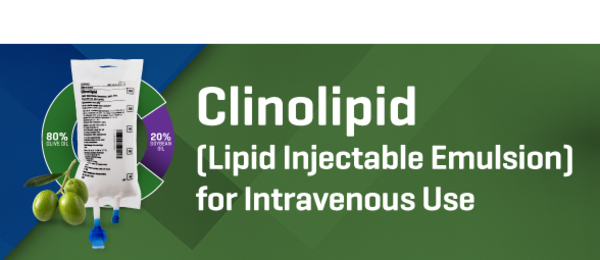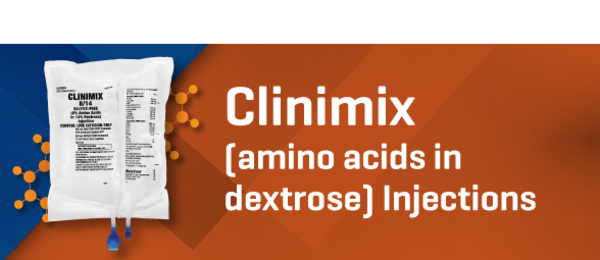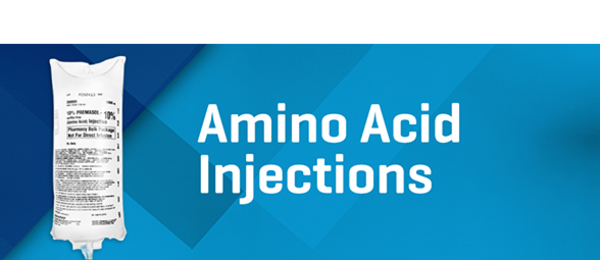NOURISH
with an extensive portfolio of PN solutions
Baxter’s clinically proven IV macro and micronutrients deliver life-sustaining energy and nutrients, including multi-chamber bag (MCB-PN) solutions, lipids, amino acids and multivitamins.

Rich in Omega-9 Fatty Acids - Approved for Neonatal & Pediatric Use1
CLINOLIPID (Lipid Injectable Emulsion) for Intravenous Use is an 80% olive oil, 20% soybean oil emulsion that is rich in immune neutral omega-9 fatty acids1,4-7 – providing less soybean oil and more olive oil than any other mixed-oil ILE.1,8
Biologic studies have demonstrated immune neutral properties of omega-9 fatty acids. Immune neutral benefits have not been established in clinical studies.6
Indication
CLINOLIPID injection is indicated in adults and pediatric patients, including term and preterm neonates as a source of calories and essential fatty acids for parenteral nutrition (PN) when oral or enteral nutrition is not possible, insufficient, or contraindicated.
Select Important Risk Information
- The use of CLINOLIPID injection is contraindicated in patients with the following:
- Known hypersensitivity to egg, soybean, peanut, or any of the active or inactive ingredients.
- Severe disorders of lipid metabolism characterized by hypertriglyceridemia (serum triglycerides >1,000 mg/dL).
- Clinical Decompensation with Rapid Infusion of Intravenous Lipid Emulsion in Neonates and Infants: Acute respiratory distress, metabolic acidosis, and death after rapid infusion of intravenous lipid emulsions have been reported. Carefully monitor the infant’s ability to eliminate the infused lipids from the circulation (e.g., measure serum triglycerides and/or plasma free fatty acid levels). If signs of poor clearance of lipids from the circulation occur, stop the infusion and initiate a medical evaluation.
Click here for full indication(s) and Important Risk Information and accompanying full Prescribing Information for Clinolipid.

Reach Protein Targets in Less Fluid2,3
With up to 80 g/L of protein (amino acids), CLINIMIX (amino acids in dextrose) Injections and CLINIMIX E (amino acids with electrolytes in dextrose with calcium) Injections enable you to reach guideline recommended doses of protein (amino acids) in less fluid.2,3
Indications
CLINIMIX (amino acids in dextrose) Injections and CLINIMIX E (amino acids with electrolytes in dextrose with calcium) Injections are indicated as a source of calories and protein (and electrolytes for CLINIMIX E) for patients requiring parenteral nutrition when oral or enteral nutrition is not possible, insufficient, or contraindicated. CLINIMIX and CLINIMIX E may be used to treat negative nitrogen balance in patients.
Select Important Risk Information
- CLINIMIX and CLINIMIX E Injections are contraindicated in patients with known hypersensitivity to one or more amino acids or dextrose; in patients with inborn errors of amino acid metabolism due to risk of severe metabolic and neurologic complications; and in patients with pulmonary edema or acidosis due to low cardiac output. In addition, CLINIMIX E is contraindicated in neonates (less than 28 days of age) receiving concomitant treatment with ceftriaxone, even if separate infusion lines are used, due to the risk of fatal ceftriaxone calcium salt precipitation in the neonate’s bloodstream.
- Pulmonary vascular precipitates causing pulmonary vascular emboli and pulmonary distress have been reported in patients receiving parenteral nutrition. Excess addition of calcium and phosphate increases the risk of the formation of calcium phosphate precipitates. The solution should be inspected for precipitates before admixing, after admixing, and again before administration. Protect the activated parenteral nutrition solution from light. If signs of pulmonary distress occur, stop the infusion and initiate a medical evaluation.
Click here for full Indication(s) and Important Risk Information and accompanying full Prescribing Information for Clinimix and Clinimix E.

Support Protein Needs with Less Fluid
Our broad range of sulfite-free Amino Acid Injections in a wide array of bag sizes are available for pediatric and adult patients.
NOURISH withAmino Acid Injections.
Explore Clinical Nutrition Products
CLINOLIPID (Lipid Injectable Emulsion) for intravenous use Indication and Important Risk Information
Indication
CLINOLIPID injection is indicated in adults and pediatric patients, including term and preterm neonates as a source of calories and essential fatty acids for parenteral nutrition (PN) when oral or enteral nutrition is not possible, insufficient, or contraindicated.
Important Risk Information
- The use of CLINOLIPID injection is contraindicated in patients with the following:
- Known hypersensitivity to egg, soybean, peanut, or any of the active or inactive ingredients.
- Severe disorders of lipid metabolism characterized by hypertriglyceridemia (serum triglycerides >1,000 mg/dL).
- Clinical Decompensation with Rapid Infusion of Intravenous Lipid Emulsion in Neonates and Infants: Acute respiratory distress, metabolic acidosis, and death after rapid infusion of intravenous lipid emulsions have been reported. Carefully monitor the infant’s ability to eliminate the infused lipids from the circulation (e.g., measure serum triglycerides and/or plasma free fatty acid levels). If signs of poor clearance of lipids from the circulation occur, stop the infusion and initiate a medical evaluation.
- Parenteral Nutrition-Associated Liver Disease (PNALD): Increased risk in patients who receive parenteral nutrition for greater than 2 weeks, especially preterm neonates. Monitor liver tests: if abnormalities occur, consider discontinuation or dosage reduction.
- Hypersensitivity Reactions: Monitor for signs or symptoms. Discontinue infusion if reactions occur.
- Risk of Infections, Fat Overload Syndrome, Refeeding Syndrome, Hypertriglyceridemia, and Essential Fatty Acid Deficiency (EFAD): Monitor for signs and symptoms; monitor laboratory parameters.
- Ensure aseptic techniques are used for catheter placement, catheter maintenance, and preparation and administration of CLINOLIPID.
- If signs or symptoms of fat overload syndrome occur, stop CLINOLIPID.
- To prevent complications from Refeeding Syndrome, closely monitor severely malnourished patients and slowly increase their nutrient intake.
- Measure serum triglycerides before the start of infusion and regularly throughout treatment. If triglyceride levels are above 400 mg/dL in adults, stop the CLINOLIPID infusion and monitor serum triglyceride levels to avoid clinical consequences of hypertriglyceridemia.
- Laboratory testing using the triene to tetraene ratio may not be adequate to diagnose EFAD, and assessment of individual fatty acid levels may be needed.
- Aluminum Toxicity: Increased risk in patients with renal impairment, including preterm neonates. CLINOLIPID injection contains no more than 25 mcg/L of aluminum.
- Most common (≥5%) adverse drug reactions from clinical trials in adults were nausea and vomiting, hyperlipidemia, hyperglycemia, hypoproteinemia, and abnormal liver function tests.
- Most common (≥5%) adverse reactions from clinical trials in pediatric patients were hyperbilirubinemia, patent ductus arteriosus, anemia, gastroesophageal reflux disease, bradycardia, feeding intolerance, neonatal intraventricular hemorrhage, increased alkaline phosphatase, atrial septal defect, hyponatremia, sepsis, and infantile apnea.
- The anticoagulant activity of coumarin derivatives, including warfarin, may be counteracted.
Click here for accompanying full Prescribing Information for CLINOLIPID.
CLINIMIX (amino acids in dextrose) Injections and CLINIMIX E (amino acids with electrolytes in dextrose with calcium) Injections Indications and Important Risk Information
Indications
CLINIMIX (amino acids in dextrose) Injections and CLINIMIX E (amino acids with electrolytes in dextrose with calcium) Injections are indicated as a source of calories and protein (and electrolytes for CLINIMIX E) for patients requiring parenteral nutrition when oral or enteral nutrition is not possible, insufficient, or contraindicated. CLINIMIX and CLINIMIX E may be used to treat negative nitrogen balance in patients.
Important Risk Information
- CLINIMIX and CLINIMIX E Injections are contraindicated in patients with known hypersensitivity to one or more amino acids or dextrose; in patients with inborn errors of amino acid metabolism due to risk of severe metabolic and neurologic complications; and in patients with pulmonary edema or acidosis due to low cardiac output. In addition, CLINIMIX E is contraindicated in neonates (less than 28 days of age) receiving concomitant treatment with ceftriaxone, even if separate infusion lines are used, due to the risk of fatal ceftriaxone calcium salt precipitation in the neonate’s bloodstream.
- Pulmonary vascular precipitates causing pulmonary vascular emboli and pulmonary distress have been reported in patients receiving parenteral nutrition. Excess addition of calcium and phosphate increases the risk of the formation of calcium phosphate precipitates. The solution should be inspected for precipitates before admixing, after admixing, and again before administration. Protect the activated parenteral nutrition solution from light. If signs of pulmonary distress occur, stop the infusion and initiate a medical evaluation.
- Precipitation of ceftriaxone-calcium can occur when ceftriaxone is mixed with CLINIMIX E, in the same intravenous administration line. Do not administer ceftriaxone simultaneously with CLINIMIX E via a Y-site.
- Stop infusion immediately and treat patient accordingly if signs or symptoms of a hypersensitivity reaction develop.
- Monitor for signs and symptoms of early infections.
- Refeeding severely undernourished patients may result in refeeding syndrome. Thiamine deficiency and fluid retention may also develop. Monitor severely undernourished patients and slowly increase nutrient intakes.
- CLINIMIX and CLINIMIX E solutions containing more than 5% dextrose have an osmolarity of ≥ 900 mOsm/L and must be infused through a central catheter.
- CLINIMIX and CLINIMIX E contain no more than 25 mcg/L of aluminum which may reach toxic levels with prolonged administration in patients with impaired kidney function. Preterm infants are at greater risk because their kidneys are immature, and they require large amounts of calcium and phosphate solutions which contain aluminum. Patients with impaired kidney function, including preterm infants, who receive parenteral levels of aluminum at greater than 4 to 5 mcg/kg/day, accumulate aluminum at levels associated with central nervous system and bone toxicity. Tissue loading may occur at even lower rates of administration.
- Parenteral Nutrition Associated Liver Disease (PNALD) has been reported in patients who receive parenteral nutrition for extended periods of time, especially preterm infants. If CLINIMIX and CLINIMIX E treated patients develop liver test abnormalities consider discontinuation or dosage reduction.
- Use CLINIMIX and CLINIMIX E with caution in patients with cardiac insufficiency or kidney disease due to increased risk of electrolyte and fluid volume imbalance.
- Monitor renal and liver function parameters, ammonia levels, fluid and electrolyte status, serum osmolarity, blood glucose, blood count and coagulation parameters throughout treatment. In situations of severely elevated electrolyte levels, stop CLINIMIX and CLINIMIX E until levels have been corrected.
- Adverse reactions include diuresis, extravasation, glycosuria, hyperglycemia, and hyperosmolar coma.
Please click here for accompanying full Prescribing Information for Clinimix.
Please click here for accompanying full Information for Clinimix E.
